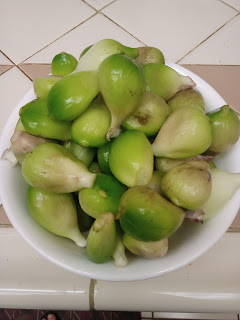First, I would like to thank all the county workers for the excellent job they are doing in light of the decreased property tax revenue. County services do not seem to be diminished in the least.
I would like to remind everyone present that not every household in Hernando County is going to be keeping chickens. I estimate that it will be less than one household per block, especially considering the high numbers of vacant houses and rentals.
I would like to publicly remind everyone that the City of Tampa and the City of St. Petersburg have had chicken ordinances for years and years, without causing any additional noise or pollution.
My family and I would ask that the requirements and restrictions for the chicken coops be left deliberately vague, providing that no existing building codes are violated. We would like to creatively confine our hens to promote the best health and sanitation practices. Confinement is absolutely necessary to protect hens from predators, but it does not mean hens should be disallowed from exercise and sunlight. Creativity in coop building is key.
I feel that if a community wants to restrict chickens then they should come together to form a homeowners association.
We are also wondering why only four hens are allowed? In addition to my husband and daughter I have two sets of elderly parents and many elderly neighbors here in Spring Hill who will not be able to care for chickens, but I can. Perhaps a special permit could be possible to allow more hens.
Fresh, locally produced eggs are a gateway to good nutrition for our most vulnerable populations - small children and the elderly.
I was also wondering if the commissioners would be opposed to a gardening group planting young trees to beautify our public schools? Some of our schools are decidedly devoid of shade and beauty.
Board of County Commissioners Regular Meeting
2/26/13 09:00 am Scroll to 33:00.
Follow-up email:
To the Hernando County Florida Board of County Commissioners,
I was shocked to hear the disapproving comments of the construction and realty interests regarding the decision to allow chickens in residential areas of Herrnando. They could bring no proof whatsoever that chickens will, in fact, be detrimental to property values in Hernando County.
I, on the other hand, can absolutely prove that chickens will be a boon to Hernando County. Rural King will be moving into a vacant eyesore of a building, and renovating it, and providing jobs to 60-80 employees. That's about 70 people who will be able to provide for their families, something West Hernando desperately needs. The business will be generating sales taxes to fund our critical infrastructure. It will also be drawing business from West Pasco and West Citrus, as these areas are underserved by feed and supply stores.
The Hernando County farmer's market is a wild success, and it is a place where locals can come together to sell home-grown products. There are many booths there selling home-baked or crafted goods, again, good for our economy and providing income for the unemployed.
Perhaps the construction industry could view the new ordinance as a revenue source. There will, no doubt, be many households that will want hens for nutrition reasons but will be unable to build an appropriate structure.
Some of the realtor's concerns focused on deed-restricted communities. I do not live in a deed-restricted community, but if I did, I would insist on having a Home Owner's Association to protect my property from any neighbor who might want to build an ugly structure. But, I say again, there is no evidence that a few well-tended chickens lower property values.
Again, the city of St. Petersburg, Tampa, Ocala, Orlando, Melbourne, Jacksonville, Fernandina Beach, Escambia County and many other areas allow backyard chickens. These areas do not have issues with vermin, odor, or noise. All require the chickens to be confined at all times.
The cost-to-feed ratio: Assuming the hens are mature and laying, and assuming one egg per 6 ounces of feed, you can get approximately 133 organic eggs from one 50-pound bag or chicken feed, which is approximately $15 from Rural King. 133 organic eggs will cost you at least $35, if not more. And the eggs will not be fresh; time does degrade the quality of the nutrition.
Texas A & M fact sheet about Backyard Chickens shows that backyard eggs have more poly-unsaturated fat (healhy fats like Omega-3s) and anti-oxidants than regular eggs.
Cambridge Study about Organic Egg Nutrition Content.
It was mentioned in the meeting that there are places in the county to buy farm-fresh eggs, and that is true. However, the locations mentioned by the woman do not exist. There are no farmer's markets on County Line Road that sell eggs. There are no farmer's markets, farm stands, or CSA locations at or near grocery stores serviced by THE BUS. There are no grocery stores in the county that sell farm-fresh, local, organic eggs. Auro community gardens is not near any residential areas with a high population. Most of the population of Hernando County lives in greater Spring Hill and Brooksville, outside of gated communities.
Thank you for your consideration and open-mindedness in this matter. We plan on coming to the next meeting to hear what you decide.










